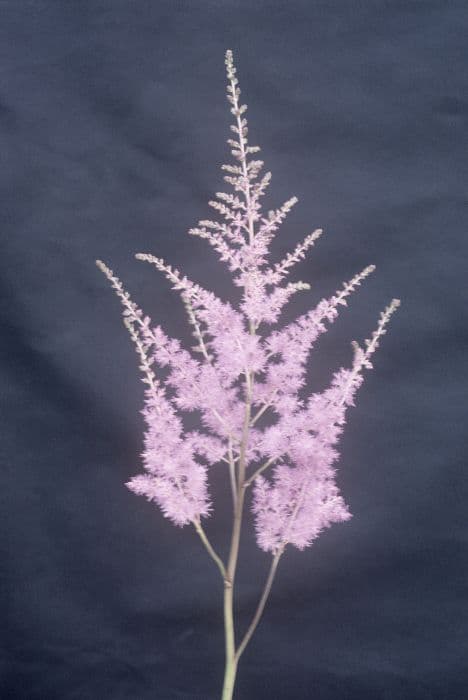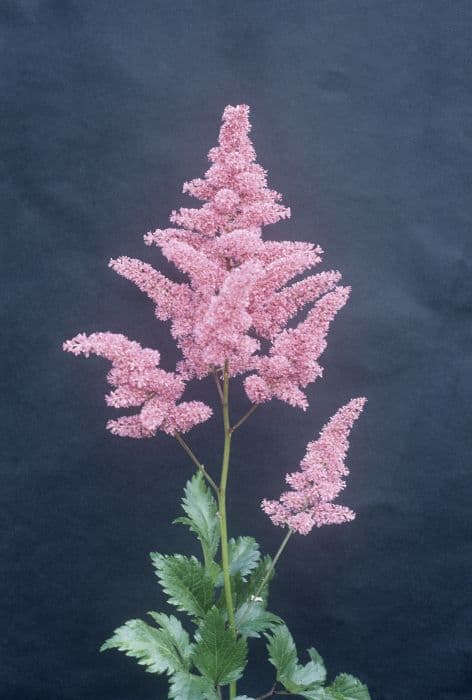Alum root 'Delta Dawn' Heuchera 'Delta Dawn' (PBR)

ABOUT
'Delta Dawn' is a mound forming perennial, with large rounded palmate lime-gold foliage with red centre in spring and autumn. In summer leaves change to red veined leaves over lime-gold foliage. small white panicles of flowers in summer.
About this plant
 Names
NamesFamily
Saxifragaceae
Synonyms
Coral Bells, Alumroot
Common names
Heuchera 'Delta Dawn'
 Characteristics
CharacteristicsLife cycle
Perennials
Foliage type
Evergreen
Color of leaves
Mixed
Flower color
White
Height
1-2 feet [30-60 cm]
Spread
1-2 feet [30-60 cm]
Plant type
Herb
Hardiness zones
4-9
Native area
North America
Benefits
 General Benefits
General Benefits- Ornamental Appeal: Heuchera 'Delta Dawn' offers striking foliage with unique color variations, from green to red and gold, enhancing garden aesthetics throughout the year.
- Low Maintenance: This plant requires minimal care once established. It thrives in a range of conditions, making it suitable for various garden styles.
- Season-Long Interest: The foliage remains attractive across multiple seasons, providing continual interest and contrast in the garden.
- Drought Tolerance: Once established, it can withstand periods of dryness, reducing the need for frequent watering.
- Shade Tolerance: This coral bells variant is capable of growing well in shaded areas where other plants might struggle, making it ideal for understory plantings and woodland gardens.
- Attracts Pollinators: The small bell-shaped flowers of Heuchera 'Delta Dawn' can attract butterflies and hummingbirds, promoting biodiversity.
- Deer and Rabbit Resistant: This plant is not typically favored by deer or rabbits, which helps prevent damage and the need for protective measures.
- Versatility: Perfect for container planting, borders, and as ground cover, offering flexibility in garden design and use of space.
- Non-Invasive: Heuchera 'Delta Dawn' does not aggressively spread, which prevents it from overtaking other plants in the garden.
- Easy Propagation: It can be easily propagated through division, allowing gardeners to expand their collection or share with others without additional cost.
 Medical Properties
Medical PropertiesThis plant is not used for medical purposes.
 Air-purifying Qualities
Air-purifying QualitiesThis plant is not specifically known for air purifying qualities.
 Other Uses
Other Uses- Photography subject: With its unique and colorful foliage, Heuchera 'Delta Dawn' can be used as an attractive subject for macro and garden photography enthusiasts.
- Leaf casting: The textured leaves can be used in leaf casting projects to create decorative art pieces and plaques for the garden or home.
- Education: As a named cultivar with distinct characteristics, Heuchera 'Delta Dawn' can be used in horticulture classes to teach about plant breeding and cultivar development.
- Themed gardens: The plant's vibrant foliage can be used to create a 'fiery' theme in gardens, alongside other plants with red, orange, and yellow leaves.
- Seasonal arrangements: The leaves of Heuchera 'Delta Dawn' can be included in autumnal floral arrangements for their seasonal color synergy.
- Habitat enrichment: When planted in gardens, this variety can provide foliage-based enrichment for small fauna and beneficial insects.
- Weather indicator: The changing leaf colors may subtly indicate seasonal shifts, acting as a natural barometer for attentive gardeners.
- Container spiller: When planted in containers, Heuchera 'Delta Dawn' can spill over the edges, adding a lush, cascading effect to mixed plant pots.
- Color contrast in rockeries: In rock gardens, the plant can be used to provide a striking color contrast against the muted tones of rocks and gravel.
- Boutonnieres and corsages: Small leaves of the Heuchera 'Delta Dawn' could be used creatively in making botanical jewelry such as boutonnieres and corsages for special events.
Interesting Facts
 Feng Shui
Feng ShuiThe Coral Bells is not used in Feng Shui practice.
 Zodiac Sign Compitability
Zodiac Sign CompitabilityThe Coral Bells is not used in astrology practice.
 Plant Symbolism
Plant Symbolism- Enduring Beauty: Heuchera, commonly known as Coral Bells, often symbolizes enduring beauty due to its attractive foliage that remains vibrant across seasons.
- Variety and Versatility: With the 'Delta Dawn' variety, the symbolism extends to variety and versatility, reflecting the diverse coloration and adaptability of the plant in various garden conditions.
- Protection: Coral Bells have been known to symbolize a protective charm, which stems from the belief that these plants could ward off negative energies when planted in a garden.
 Water
WaterCoral Bells should be watered thoroughly when the top inch of soil feels dry to the touch, which typically amounts to once or twice a week depending on weather conditions. The goal is to maintain evenly moist soil without waterlogging the plant, as Coral Bells prefer a consistent level of moisture. During periods of drought or extreme heat, additional watering may be necessary. Apply water directly to the soil to avoid wetting the foliage, which can lead to fungal diseases. An average watering might involve giving the plant approximately 1 gallon of water every 7 to 10 days, adjusting as necessary for climate and soil drainage.
 Light
LightCoral Bells thrive in conditions where they can receive partial shade to full shade, particularly avoiding the harsh afternoon sun. The ideal spot for them is one where they can benefit from morning sun and dappled light throughout the day, which encourages vibrant foliage colors. While they can tolerate some level of direct sunlight, too much will scorch their leaves, so a location under the canopy of taller plants or trees is often perfect.
 Temperature
TemperatureCoral Bells are hardy in a wide temperature range and can survive in temperatures as low as 0°F and as high as 85°F. They prefer to be grown in an environment where the temperature hovers between 60°F and 70°F for optimal growth. They can tolerate brief periods of hotter or colder weather, but prolonged exposure to extremes outside of their survivable range can damage or kill the plant.
 Pruning
PruningPruning Coral Bells involves removing any dead or damaged foliage to maintain plant health and encourage new growth. They should be pruned in early spring before new growth begins, which will also help to shape the plant and enhance its appearance. If desired, spent flower stalks can be cut back after blooming to tidy up the plant. Pruning is not often required, but an annual check to remove old, unsightly leaves can keep Coral Bells looking their best.
 Cleaning
CleaningAs needed
 Soil
SoilCoral Bells thrive in a well-draining, fertile soil mix with a pH range of 6.0 to 7.0. A mix of two parts peat moss or compost, one part perlite or vermiculite, and one part garden soil can create an ideal environment for Heuchera 'Delta Dawn'.
 Repotting
RepottingCoral Bells should be repotted every 3-4 years to refresh the soil and prevent the plant from becoming root-bound. Repotting is best done in spring or early summer.
 Humidity & Misting
Humidity & MistingCoral Bells prefer average to high humidity levels. A humidity level of around 50% is ideal for Heuchera 'Delta Dawn' but they can tolerate a range from 40% to 70%.
 Suitable locations
Suitable locationsIndoor
Place Coral Bells in bright, indirect light and keep the soil moist.
Outdoor
Plant Coral Bells in partial shade and moist, well-draining soil.
Hardiness zone
4-9 USDA
 Life cycle
Life cycleHeuchera 'Delta Dawn', commonly known as Coral Bells, begins its life cycle as a seed which, when sown, will germinate given the right conditions of warmth and moisture. The seedling stage follows germination, where the plant establishes its root system and produces its first true leaves. Juvenile Coral Bells then enter a vegetative growth phase, where foliage matures, exhibiting the plant's characteristic round, lobed leaves that often boast a blend of colors, including green, yellow, and red hues. Upon reaching maturity, Heuchera 'Delta Dawn' will start producing flowering stalks, typically in late spring to early summer, with small bell-shaped flowers that attract pollinators such as bees and butterflies. After pollination, seeds will develop and once mature, can be dispersed for propagation. Throughout its life, Heuchera 'Delta Dawn' may experience dormancy during colder months, followed by a revival of growth in the spring.
 Propogation
PropogationPropogation time
Spring-Early Summer
Heuchera 'Delta Dawn', commonly known as Coral Bells, is typically propagated by division. The best time to propagate Heuchera 'Delta Dawn' by division is in the spring or early fall, when the plant is not in active bloom. To do this, carefully dig up the entire plant, making sure to keep the root ball intact. Using a sharp knife or spade, divide the plant into smaller sections, each with several shoots and a healthy portion of roots. Replant the divisions immediately, spacing them about 12 to 18 inches (roughly 30 to 45 centimeters) apart to allow room for growth. Water the new divisions thoroughly to help establish them. This method helps maintain the vigor of the plant and allows gardeners to increase their stock of Heuchera 'Delta Dawn'.









